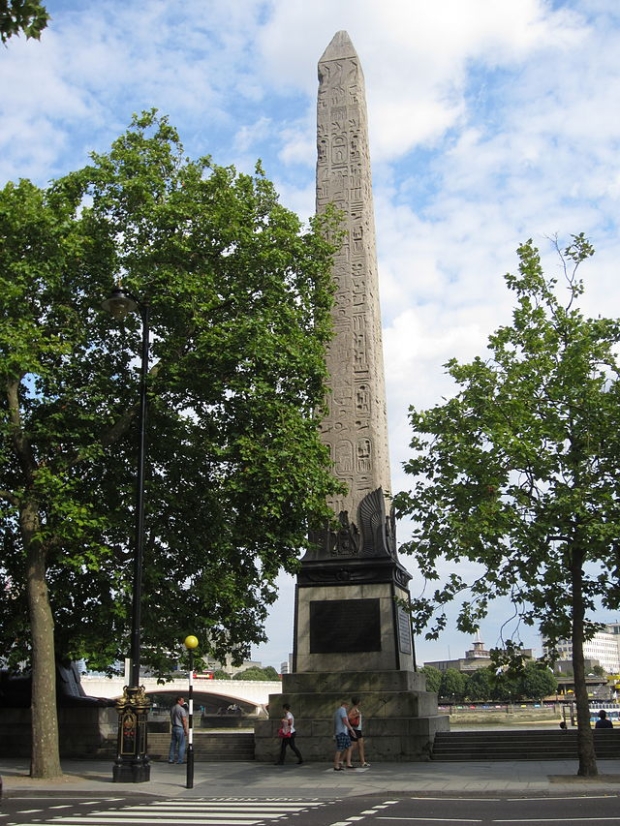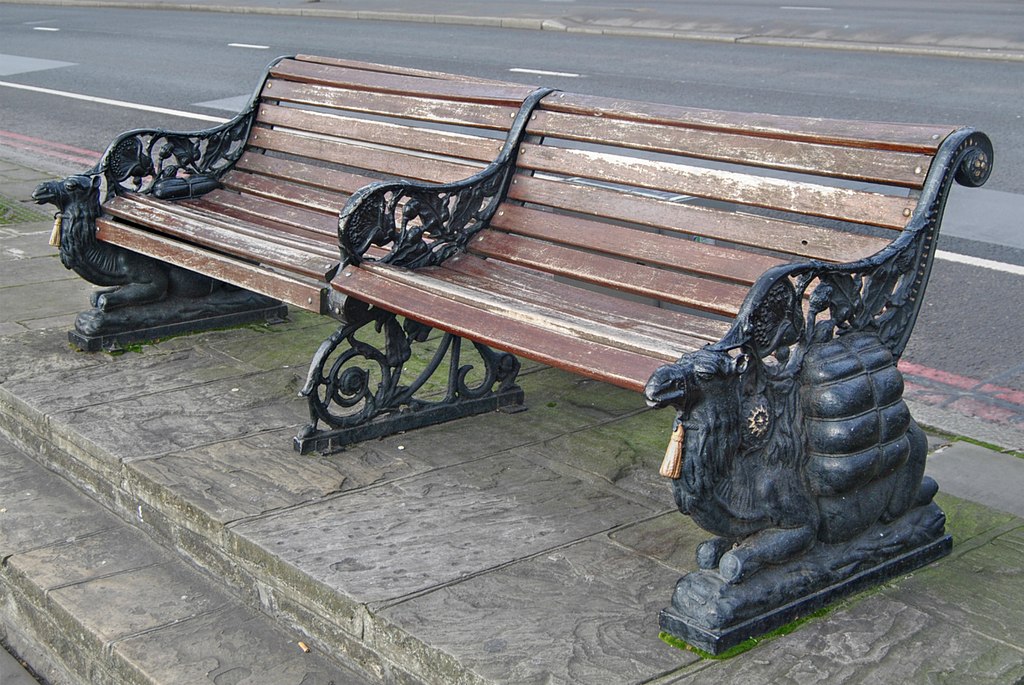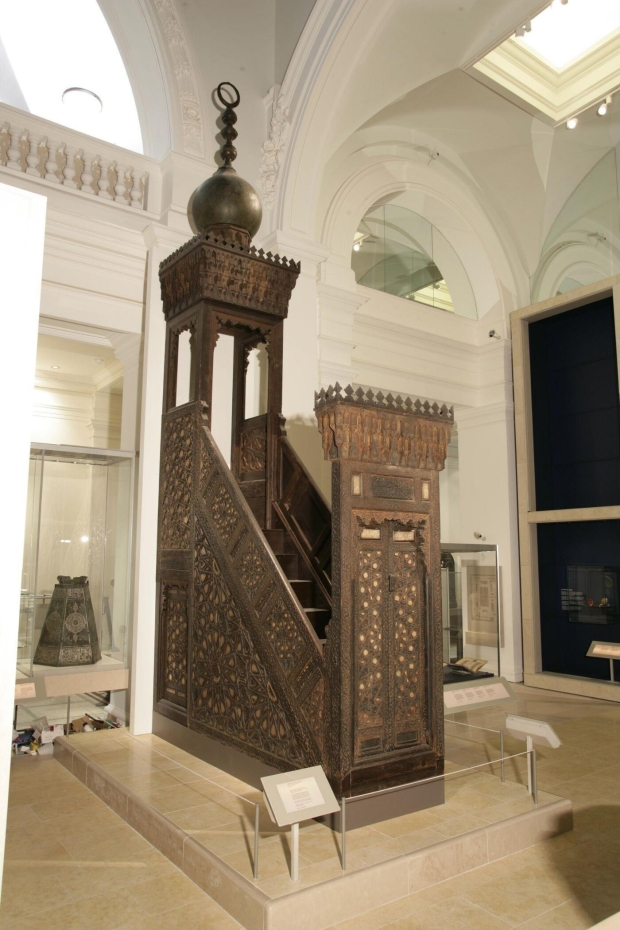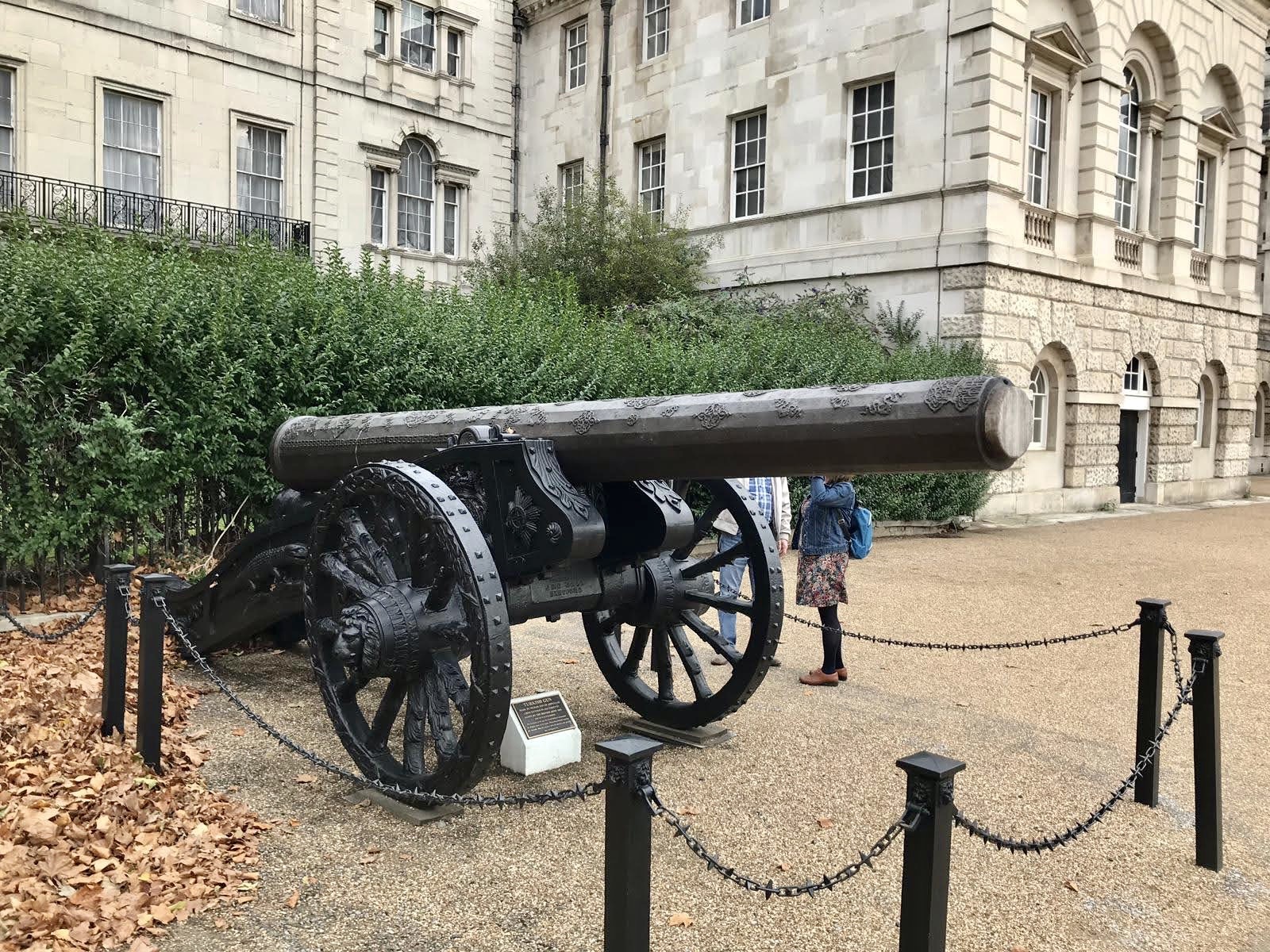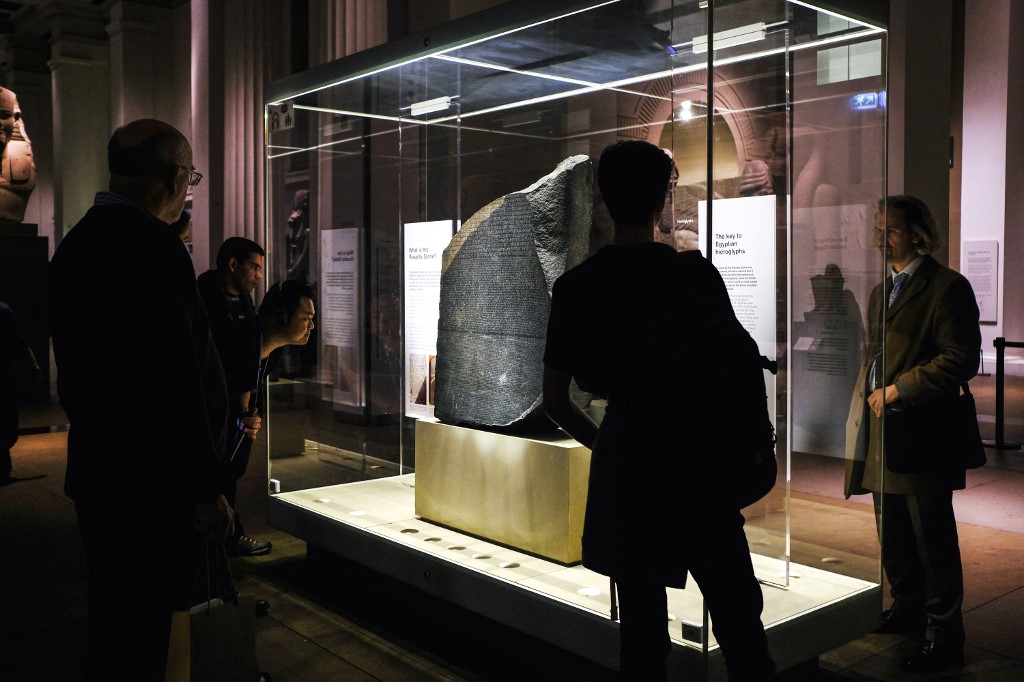Five historic Middle Eastern treasures to check out in London

The capital of the UK is full of history, both its own, and controversially, that of other places.
As the world's most powerful empire for close to two centuries, Britain became the destination of choice for artefacts from across the world, including the Middle East - sometimes through legal channels, but often through questionable legal and moral means.
Stay informed with MEE's newsletters
Sign up to get the latest alerts, insights and analysis, starting with Turkey Unpacked
The result is a treasure trove of artefacts for tourists and locals to appreciate, although there are more than a few voices demanding such artefacts return to their countries of origin.
It may nevertheless come as a surprise to Londoners and tourists alike that sites they walk past everyday may feature a historic monument that is millennia old, as is the case with Cleopatra's needle.
Here, Middle East Eye takes a look at five artefacts currently found in the city:
1. Cleopatra’s needle
Standing tall on the banks of the River Thames, a short walk from the Embankment tube station, is Cleopatra’s Needle, an obelisk engraved with ancient Egyptian hieroglyphics.
Aged around 3,500 years, the structure is likely one of the oldest human momuments currently in the city, but one whose origins are thousands of miles away.
Made during the reign of Pharaoh Thutmose III in 1460 BC, it is one of three similar obelisks, which can be found today in Paris and New York.
The obelisk, which is made from granite, weighs over 200 tonnes and was first erected in the ancient city of Heliopolis, which is now in modern Cairo.
The engravings were added by Pharaoh Ramses II around 200 years later, in an effort to mark his military successes.
Its association with Cleopatra comes from around the start of the first millenium CE, when the famed Egyptian queen relocated the obelisk to the northern Egyptian city of Alexandria as part of the construction of a temple.
In 1819, 18 years after British forces helped evict Napoleonic France from Egypt, the country's ruler Muhammed Ali gifted the monument to Britain as a gesture of gratitude.
However, it was not until 1877 that the British had the financial means to transport the gift back to London, where on its journey to the capital, it survived the treacherous waters of the Bay of Biscay.
German bombing in 1917 at the height of the First World War caused some damage to the monument, which is still visible today, but the millennia-old structure is entirely intact.
Egyptian-influenced features nearby include benches designed with camel images.
The intricately designed benches are made from cast iron and wood, and face the river.
Unlike many of the other memorial or public benches around the city, these benches are on a slightly raised platform, distinguishing them from the others.
They were designed by the English architect George John Vulliamy (1817-86), who also designed the sphinxes sitting next to Cleopatra’s Needle.
The benches' design was inspired by Vulliamy’s travels to Egypt in the 1840s, and were intended to complement the obelisk.
2. Mamluk minbar
The renowned Victoria and Albert Museum in South Kensington is home to the minbar of the Mamluk Sultan al-Ashraf Qaitbay.
A great patron of the arts, Qaitbay is believed to have commissioned the minbar, an elevated pulpit from which religious sermons are read out, in Cairo between 1468 and 1496.
Minbars are located at the front of the mosque, in the direction of Mecca, towards which Muslims direct their prayer.
The Mamluk design hosted by the Victoria and Albert Museum features decorative carvings and inscriptions, and also includes ivory mosaics. Made mostly from wood and ivory, the artefact employs geometric patterns, common in Islamic golden age architecture.
Repetition of geometric patterns and designs symbolise concepts such as unity, balance, and oneness.
The minbar also features a verse from the Quran, as well as an inscription featuring Qaitbay's name, the ruler of Egypt and Syria between 1468 to 1496.
During his reign, the sultan had earned a reputation for being pious and trustworthy, and was praised for establishing and restoring countless religious buildings.
With government funds, the museum purchased the minbar in 1869 in France after it was sent there, along with other artefacts, by Egyptian officials.
Today, the Victoria and Albert Museum holds over 19,000 items from the Middle East and North Africa, ranging from clothing to ceramics and artwork.
3. Turkish gun
Located in Whitehall in central London is an Ottoman cannon, taken by the British Army while fighting against Napoleon in Egypt in 1801.
The British obtained the gun following the siege of Alexandria, during the Napoleonic Wars.
Under Napoleon, the famed military commander and later emperor, revolutionary France fought a series of wars against its European neighbours and invaded Egypt looking for new sources of income.
But like his European campaigns, Napoleon's initial successes in Egypt soon ground to a halt and an alliance of Ottoman and British forces forced his withdrawal.
Today, the Turkish cannon sits in front of the Horse Guards building, which millions of tourists and locals walk past each year on their way to see sights in Westminster.
According to a plaque on the gun, the weapon was made by Murad, the son of Abdullah Chief Gunner, in 1524.
Another inscription reads: "The Solomon of the age, the Great Sultan Commander of the dragon guns (to be made). When they breathe, roaring like thunder. May the enemy’s forts be raised to the ground. Year of Hegira (Hijra) 931."
While the gun itself is of Turkish origin, the carriage was made in the UK by the Royal Carriage Department.
4. Rosetta Stone
The Rosetta Stone was discovered in July 1799 by French soldiers in Egypt and later handed over to the British following Napoleon's defeat.
Written in three scripts, the stone contains a proclamation by Ptolemy V which dates to around the second century BCE. The scripts include: hieroglyphics, demotic Egyptian script, and Ancient Greek.
For Egyptologists of the 19th century, the tablet served as a cipher, as the Ancient Greek text could be used to work out what the hieroglyphics meant.
Use of the writing system had been forgotten more than 14 centuries earlier and by working out what they meant on the Rosetta Stone, the knowledge could be applied to inscriptions on other Ancient Egyptian artefacts.
Nevertheless, the effort needed to crack "the code" was intense and the breakthrough came in 1822 when Frenchman Jean-Francois Champollion figured out its meaning.
The presence of artefacts, such as the Rosetta Stone, have long been a subject of controversy for the British Museum, which is located near London's Russell Square. Critics have long demanded that the antiquities be repatriated back to their countries of origin.
Despite calls for the stone to be returned to Egypt, it remains in the museum with around six million people visiting annually.
5. Winged lion statue
Also in the British Museum is a winged lion statue dating back to the neo-Assyrian period, around 883-859 BC.
The human head is believed to represent intelligence, the lion body demonstrates strength, while the wings symbolise swiftness.
British archaeologist Austen Henrey Layard excavated the statue while working in Northern Iraq between 1845 and 1851.
Discovered in the city of Nimrud, modern day Mosul, the statue was shipped to London in 1852.
The statue, made from gypsum, was intended to guard the entrance to a palace belonging to Assyrian King Ashurnasirpal II.
The mythological creature was believed to offer protection to the Royal Palace, and guard it against forces of chaos and demons.
One of the most striking features about the statue are the five legs, carefully created so it appears to be standing tall and firm when viewed from the front, and so it appears to be striding forward against evil when viewed from the side.
The creature, also known as Lamassu, is mentioned in the epic of Gilgamesh, such statues were often found in entrance ways.
Middle East Eye delivers independent and unrivalled coverage and analysis of the Middle East, North Africa and beyond. To learn more about republishing this content and the associated fees, please fill out this form. More about MEE can be found here.



